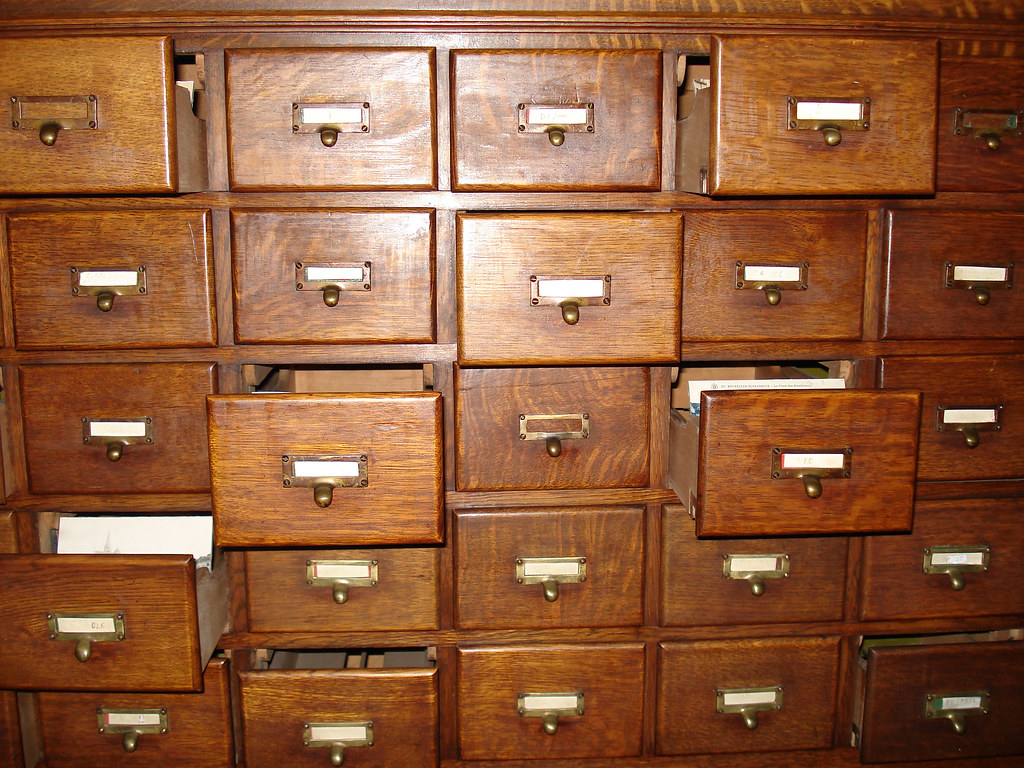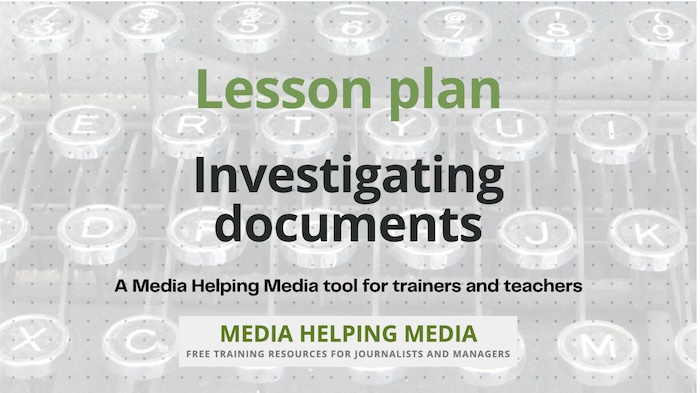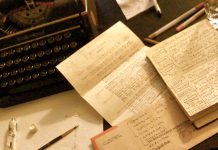
The investigative journalist never takes things at face value. They probe and question in order to get to the truth.
Some journalists accept official documents without question; not so the investigative journalist. If you are to uncover the story you need to keep asking questions.
- Who’s your daddy?
- Find out who created the document and why.
- Somebody had to have a reason to create a form or document.
- Figure out which person or agency went to the trouble of making a form.
- When were you born?
- Find out the issue date and ask about updates.
- In most bureaucracies, the form will change to adapt to conditions the makers never anticipated.
- There are times when earlier versions of the same form asked for different information.
- What language do you speak?
- Make sure you understand the terms.
- Agencies and departments and ministries love jargon, acronyms and codes.
- If you don’t understand what everything means, you’re missing out.
- Where do you live?
- You might need to make another visit.
- If you didn’t get the document from its regular source, it’s important to know where it resides.
- Sometimes you can meet its family.
- Who else is in your family?
- Find out what other documents may be on file.
- Government agencies are never content with just one form.
- When you learn everything about the function of the form, you’ll find others with even more information.
- Are you married?
- Is there another document that is wed to this one?
- Purchase orders always lead to bills of lading and receipts.
- When you know to look for the related documents, you will always discover more details and new leads.
- Why are you here?
- Figure out the need for the document at the time of issuing.
- Usually it came about because of some need – maybe a crisis.
- Sometimes it’s a law or regulation that required it.
- Get to the bottom of why someone conceived it.
- Just what is your job anyway?
- Understand its purpose today.
- As crazy as bureaucrats are, they still wouldn’t make a form or document that has no purpose.
- When you understand what it’s supposed to accomplish, you will figure out the system – and that’s the key to knowing what’s really going on.
- What information do you have?
- Ask about every piece of information.
- Make sure you understand what every speck of ink on the document means.
- This applies to what was on the blank form as well as the information someone filled in.
- Who told you this stuff?
- It had to learn the information from someone.
- Did someone actually weigh the person getting the driver’s license or did they rely on what the applicant told them?
- If you don’t know how they came up with the information in a form or document, you leave yourself open to making errors.
- Who else are you allowed to talk to?
- Find out if it’s a public record.
- The more personal or sensitive a document is, the more restrictions there may be on who is allowed to possess it, read it or process it.
- Always find out who’s allowed to see it and, even more important, who’s not allowed to see it and why.
- Did you verify the information?
- People can write whatever they want on a form.
- Forms are, in essence, questionnaires.
- Find out what systems are in place to ensure that the information is incorrect.
- If the agency or department is lazy in this situation, it could be an invitation for corruption and misuse.
- How do I know you’re telling me the truth?
- Yes, documents can also lie to you.
- Think about your own resume.
- Do you really know how to use those machines and systems you claim you’re efficient at operating?
- Just because it’s in print doesn’t mean that it’s true.
- Be suspicious.
- Verify the information independently.
- What other secrets are you keeping?
- Look for codes and fine print.
- Too many investigative people look only at what’s filled in on a document, and not what the document is specifically asking for.
- Some journalists request blank copies of every document or form an agencies uses.
- Then, they ask for the documents or regulations that explain the encoded information.
- Who else have you been talking to?
- Maybe there’s a log of who’s seen the file.
- Some documents are so important or sensitive that anyone who looks at it, copies it or checks it out must sign a register of some sort.
- Get that register.
- If you don’t know the answer, who might?
- See if it leads you somewhere else.
- So the document provides someone’s date of birth but not the place of birth.
- Figure out which related document (documents are often members of families) might have the missing information.
- Maybe even an earlier version of the same one.
- Are you legal?
- Make sure you don’t have a fake or altered document.
- Never trust someone who introduces you to a document.
- Interrogate the document and be alert to answers that just don’t sound (or look) right.
- Sure, you want to believe that someone gave you an official document, but don’t get lazy.
- Find its twin and look for things that don’t match.
- How did you get here?
- Find out how a document gets from A to B.
- If you ask the officially recorded death certificate how it got to that file cabinet, you might learn that it spent a month or so being processed somewhere else.
- Next time, you can look for newer documents while they’re in transit.
- Are you retired?
- Some documents have become obsolete.
- Bureaucrats love to redo documents.
- Always check to ensure that the information in one document hasn’t been superseded by a newer version.
- Sometimes the issue date of the document is at the bottom of the form.
- What’s your life expectancy?
- Check records-retention policy.
- It’ll happen to you for sure, unless you’re careful.
- You look at documents in some public office and later decide you want copies.
- But when you get there, you discover that someone decided to put it in the bin or the shredder.
- Know how long they’re allowed to exist.
- Who have you been intimate with?
- Find out who has processed or handled it.
- Signatures, check boxes, initials, rubber stamps and even metadata will give you clues as to who had reason to have contact with the document. 📃
- Be suspicious of the signatures of top-level officials.
- They hardly ever sign documents themselves. Find out who really signed or initialed it.
- Are you really a blonde?
- Make sure someone hasn’t altered the document.
- Many a journalist has lost his or her credibility because they didn’t verify every piece of information in a document.
- Sometimes the changes are obvious to the eye if you examine it closely enough. Don’t trust them.
- Do you have any twin brothers or sisters?
- There may be copies in other offices.
- Before computers, people made a fortune selling carbon paper to government agencies.
- It seems that they want everyone to have a copy of just about every document.
- If the distribution list isn’t printed on the form, look to the laws, policies or directives to find out where all those copies go.
- Would you be willing to testify in court?
- A certified copy will save court time.
- When you can get a government official to certify that the copy is true and correct, you’ll prevent a lot of potential problems.
- f it turns out that something is not correct, the burden falls on the official who certified it.
- You’re not planning on leaving town, are you?
- Put your copies in a safe place.
- There’s nothing more devastating than to lose the actual evidence you had that proved the corruption.
- Always scan your documents and keep digital copies in various safe places.
- There are forces out there who don’t want you to be able to share the evidence you’ve found.

Questions
- What is the primary role of an investigative journalist?
- Why is it important for an investigative journalist to understand the terms used in documents?
- How can an investigative journalist verify the authenticity of a document?
- What steps should an investigative journalist take to understand the purpose of a document today?
- Why might an investigative journalist need to examine earlier versions of a document?
- How can related documents provide additional information to an investigative journalist?
- What are some potential risks if an investigative journalist fails to verify the information in a document?
- How can an investigative journalist determine if a document is a public record?
- What is the significance of understanding a document’s records-retention policy?
- How can an investigative journalist ensure the security of their document copies?
Answers
- The primary role of an investigative journalist is to probe and question in order to uncover the truth, rather than accepting information at face value.
- Understanding the terms is crucial because agencies often use jargon, acronyms, and codes, which can lead to misunderstandings if not properly interpreted.
- An investigative journalist can verify a document’s authenticity by comparing it with other copies, checking for alterations, and confirming details with independent sources.
- To understand a document’s current purpose, an investigative journalist should investigate its intended function and how it fits into the broader system or bureaucracy.
- Examining earlier versions of a document can reveal changes in information requests and help identify the document’s evolution and context.
- Related documents can provide additional details and new leads, as they often contain interconnected information that builds a more comprehensive picture.
- Failing to verify information can lead to errors, misinformation, and potential damage to the journalist’s credibility.
- To determine if a document is a public record, an investigative journalist should investigate the restrictions on access and who is allowed to view or process it.
- Understanding a document’s records-retention policy is important to ensure that the document is still available and has not been discarded or destroyed.
- An investigative journalist can ensure the security of their document copies by scanning them and storing digital copies in multiple secure locations.
The investigative mindset: Beyond face value
The investigative journalist operates in a realm of inherent skepticism. They understand that information is rarely neutral; it’s a product of intent, power, and circumstance.
This isn’t mere cynicism, but a recognition that “truth” is often buried beneath layers of obfuscation, bureaucratic jargon, and deliberate manipulation.
The document as an artefact: Unraveling its history
- Provenance and intent:
- It’s not enough to know who created a document; you must understand why.
- Was it a genuine attempt to streamline processes, or a tool for control, surveillance, or even deception?
- Consider the political and social climate at the time of creation.
- A form designed during a period of heightened security will likely reflect those anxieties.
- Each document carries the fingerprints of its creators.
- Their biases, agendas, and even their fears are embedded within its structure and language.
- Evolution and adaptation
- Documents are not static.
- They evolve, mutate, and sometimes become unrecognisable over time.
- Tacking these changes reveals how systems adapt to changing circumstances, and often, how they attempt to conceal past actions.
- Imagine a form used to track environmental violations. Changes to the form over time might indicate a shift in enforcement priorities, or even an attempt to downplay the severity of certain offences.
- The language of power: Deciphering jargon
- Bureaucratic jargon is a weapon. It creates an artificial barrier to understanding, allowing those in power to control the narrative.
- Each acronym, code, and technical term is a potential clue. Deciphering them unlocks the hidden meanings and power dynamics within the system.
- Consider how codes in a police report might indicate the true nature of an event, where the public facing version of the report is softened.
The web of connection: Following the threads
- Document families and interdependencies
- No document exists in isolation.
- It’s part of a network, a web of interconnected records that reveal the full picture.
- Think of a financial transaction. A single invoice is meaningless without the corresponding purchase order, payment record, and audit trail.
- Tracing these connections reveals the flow of information, money, and power.
The context of issuance: Uncovering the trigger
- Documents are often born out of necessity, a response to a specific event or crisis.
- Understanding the triggering event provides crucial context, revealing the motivations behind the document’s creation and its intended purpose.
- For Example, a sudden increase in new forms in a local government office could indicate a sudden change in local laws, or indicate a new influx of federal funding, and the rules that come with that funding.
Current purpose and function: Understanding the system
- Even seemingly innocuous documents serve a purpose within the larger system.
- Understanding that purpose reveals the logic and mechanics of the system, and exposes its vulnerabilities.
- A simple form to request road repairs, if tracked, can show the level of response from a local government, and show if certain neighbourhoods are being ignored.
The human element: Information and integrity
- Source and verification: Questioning the information
- Information on a document is only as reliable as its source.
- Investigate the process by which information is collected, verified, and recorded.
- Consider the human element. Did someone cut corners? Was there pressure to falsify data?
- Access and restrictions: Unveiling hidden agendas
- Restrictions on access to documents reveal what those in power want to keep hidden.
- The more sensitive the information, the greater the effort to control its dissemination.
- Access restrictions can show what the government considers sensitive, and where they fear exposure.
- The potential for deception: Recognising lies
- Documents can be manipulated, falsified, and used to deceive.
- Develop a keen eye for inconsistencies, anomalies, and red flags.
- Digital documents have metadata, that can be altered, or left in place.
- Examining the metadata can be as important as the document itself.
- Chain of custody: Tracing the journey
- The path a document takes from creation to storage is crucial.
- Tracing this chain of custody reveals who had access to the document, and who might have altered it.
- Look for gaps in the chain, missing signatures, or unexplained delays. These are all potential signs of tampering.
Practical considerations: Ensuring accuracy and security
- Verification and authentication
- Always verify the authenticity of a document, especially if it comes from an unofficial source.
- Seek certified copies, compare documents, and look for signs of tampering.
- Preservation and security
- Protect your documents from loss, damage, and unauthorised access.
- Create multiple backups, store them in secure locations, and be wary of those who might try to seize them.
- Distribution and replication
- Understand how many copies exist, and where they are located. This can help to find if a document has been altered, or if there is a “master” copy.
- A distribution list can show the range of people who have access to the information, and show who is involved in the information loop.
By adopting this comprehensive approach, the investigative journalist transforms documents from static pieces of paper into dynamic sources of information, revealing the hidden truths that lie beneath the surface.
Lesson plan for trainers
If you are a trainer of journalists we have a free lesson plan: ‘Investigating official documents‘ which you are welcome to download and adapt for your own purposes.










